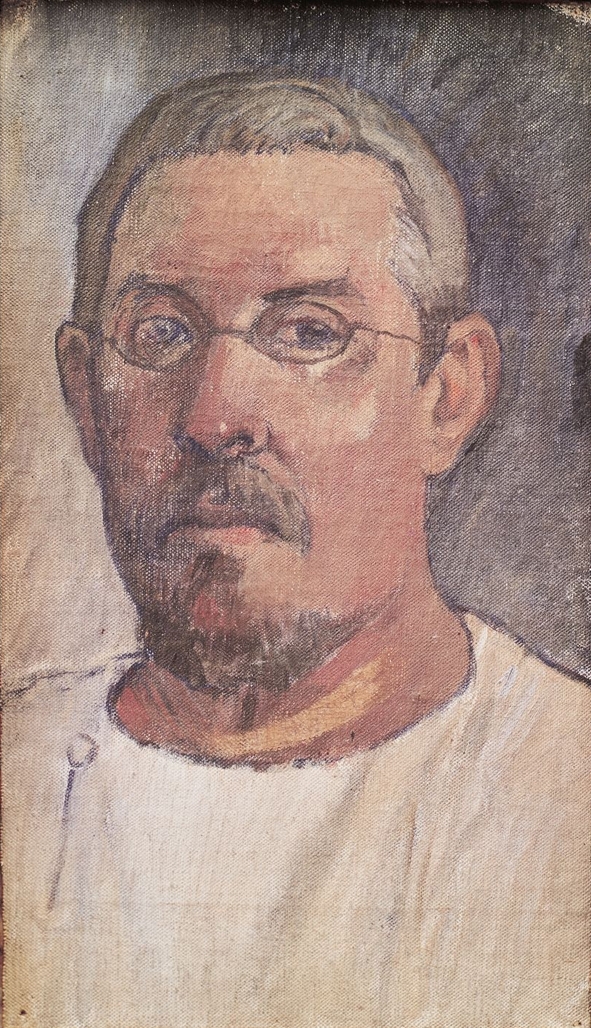Paul Gauguin
kjs on 27th May 2022
Paul Gauguin (1848-1803) was born in Paris, France.

His father was a journalist. When Gauguin was three years old, Gauguin’s family, including his mother and sister, fled Paris to Lima, Peru, as the political climate in France curtailed freedom of the press.
During the transatlantic journey, Gauguin’s father fell ill and died. Once in Peru, he and his family had to take shelter with an extended family.
Return to France from Peru
In 1855, when the situation in France returned to normalcy, Gauguin’s family returned to France and settled in the north-central French city of Orleans. In Orleans, Gauguin’s family lived with his grandfather and he began his formal education.
When Gauguin reached 17 years of age, he joined the merchant marine and three years later, he joined the French Navy. Gauguin returned to Paris in 1872 and began his career as a stockbroker.

An Art Collector
When Gauguin’s mother died in 1867, he went to live with his ‘appointed guardian, Gustav Arosa, who was a wealthy art patron and art collector.
When he was under the care of his guardian, Gauguin came across the work of famous painters like Eugene Delacroix, Gustave Courbet, Jean Baptiste Camille Corot. Gauguin married his Danish wife, Matte-Sophie Gad in 1873 and subsequently moved with his wife and five children from Paris to Copenhagen.
He also began to collect art and had a modest collection of Impressionist paintings by Renoir, Monet, and Pissarro.
Painting as a career
By 1880, Gauguin had matured enough to paint and he was painting in his spare time. He was following the Impressionistic style and his first ‘Still-Life with Fruit and Lemons‘ (1980) was an example of his style. Thereafter Gauguin rented his own studio and befriended artists such as Camille Pissarro ad Paul Cezanne.
This led to his participation in the official Impressionist exhibition of 1881 and 1882 in Paris. Following the financial crash of 1882, Gaugin lost his job as a stockbroker and he had to look for an alternative source of income.
Development of His Own Style
When Gauguin’s search for means of livelihood led to severe stress and depression, he decided to make painting his full-time profession. But he knew that he lacked the formal training required to pursue an artistic career.
When Gauguin’s wife and children went to Denmark to live with their extended family, he stayed at Pont-Aven in Brittany for several months. This helped him develop a Symbolist style of painting. Two years later, Gauguin traveled to Panama and subsequently to Martinique with his friend and fellow artist Charles Laval.
These travel to the primitive cultures, his observation of the natives in their environment, and his use of a rich, vibrant palette served Gauguin as a foundation for his own original style.
Vincent Van Gogh, then a budding and hugely gifted young artist, noticed Gauguin’s work. They began regular correspondence and exchange of paintings between themselves.
Gauguin’s ‘Self-Portrait ‘Les Miserables’ (1988) was one of them. In 1988, at van Gogh’s invitation, the two painters lived and worked together for nine weeks in van Gogh’s rented house at Arles in the south of France.
During this period, Theo van Gogh’s brother and benefactor served as Gauguin’s business manager.
Intense Association with Vincent Van Gogh
Gauguin’s nine-week stay with van Gogh helped him create some of his now-famous paintings, such as Night Cage at Arles, (1988) and Vision After the Sermon (Jacob’s Fight With the Angel) (1988).
At that time, both of them never commanded any reputation among the other well-established and mature impressionist artists like Monet, Renoir, and Pissarro. Both Gauguin and Van Gogh were treated as experimental painters. Van Gogh was prone to a depressive temperament.
By the end of their nine weeks’ stay together ended after van Gogh’s violent emotional behaviour led to the dissolution of their artistic partnership. This sad incident separated them. At the end of the day, both of them admired each other’s work in spite of their separation.
Solitary Life away from Family
After staying away from his family for a long period of time, Gauguin chose to live a solitary life and abandoned his family in 1891. He moved to French Polynesia where he spent the remaining years of his life away from, what he considered ‘an artificial European culture, in a more ‘natural condition’.
Gauguin spent the final years of his life, in Tahiti, and subsequently Punaaula, and finally the Marquesas Islands. During these years, Gauguin produced some of his well-known portraits.
Paintings on Primitive Subjects
Some of the well-known paintings of Gauguin made during these final years of his life are, Tahitian Woman on the Beach (1891), The Moon and the Earth (Hina Tefatou) (1893), Two Tahitian Women, (1899), Manao Tupapau (The Spirit of the Dead Keeps Watch) (1892) and Where Do We Come From? What are we? Where Are We Going? (1897).
Gauguin painted these works when he was beginning to suffer from depression. A sense of repose and detachment was overcoming him. Gauguin was finally bidding adieu to his career. Experts say that he was obsessed with his own mortality. Gauguin even attempted suicide by self-poisoning. However, he was unsuccessful.
Drug addiction had weakened the already morally depressed Paul Gauguin. Finally, he succumbed to the degenerative effects of syphilis and died at the age of 54 in the Marquesas Islands.
Legacy of Paul Gaugin
Experts believe that Gauguin’s naturalistic forms and primitive subjects would embolden an entire younger generation of painters. It would prompt them to move away from late impressionism and pursue more abstract and poetically inclined subjects.
Gauguin finally proved extremely influential to 20th-century modern art and the development of Cubism in the early 20th century. He became a legend almost independently of his art and came to inspire a number of literary works based on his ‘exotic’ life story. W.Somerset Maugham‘s ‘The Moon and Sixpence’ (1919) is an example that credits him with this feat.












